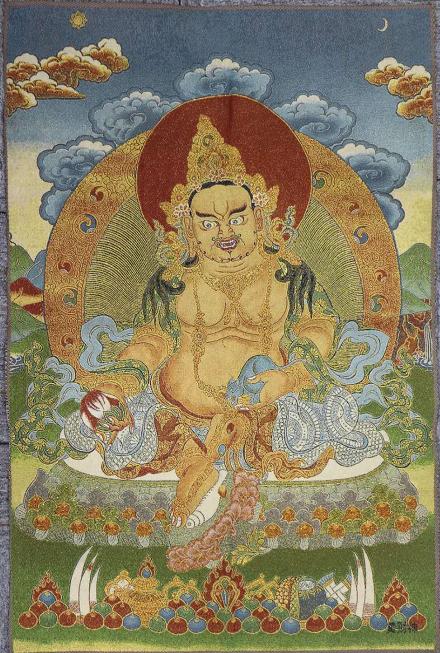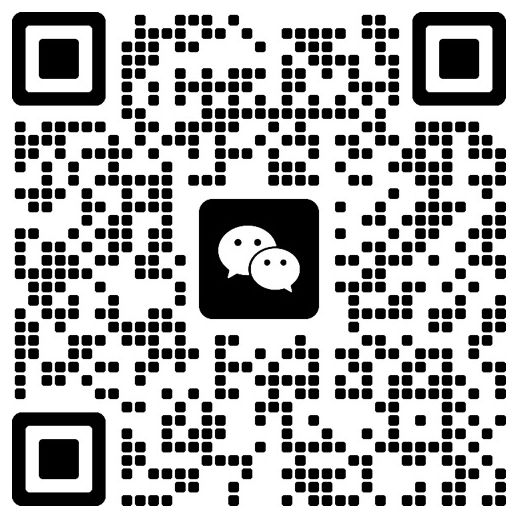金丝彩绣黄财神唐卡
Gold silk color embroidery yellow mammon thangka
唐卡(Thang-ga)也叫唐嘎,唐喀,系藏文音译,指用彩缎装裱后悬挂供奉的宗教卷轴画。唐卡是藏族文化中一种独具特色的绘画艺术形式,题材内容涉及藏族的历史、政治、文化和社会生活等诸多领域;传世唐卡大都是藏传佛教和本教作品。唐卡是藏族文化中一种独具特色的绘画艺术形式。具有鲜明的民族特点、浓郁的宗教色彩和独特的艺术风格, 用明亮的色彩描绘出神圣的佛的世界。这些天然原料保证了所绘制的唐卡色泽鲜艳,璀璨夺目,虽经几百年的岁月,仍是色泽艳丽明亮.因此被誉为中国民族绘画艺术的珍品,被称为藏族的”百科全书”也是中华民族民间艺术中弥足珍贵的非物质文化遗产。
金丝彩绣观音唐卡
此幅唐卡采用金丝彩绣工艺,是藏传佛教和东方佛教的神圣物品,品相很好。绣制时,先按所需花饰, 用绢、绫或布剪成花型,再用锁边针法和其他短直针法沿贴花缝绣在丝绸地上。轮廓线处,采用金丝线 包裹成束马鬃编制而成的细绳勾勒线条,使得轮廓线柔中带刚,颇
Tang-ga, also known as Thang-ga and Tang ka, is a transliteration of Tibetan, referring to religious scroll paintings that are mounted in colorful satin and hung for worship. Thangka is a unique artistic form of painting in Tibetan culture. Its subject matter covers many fields such as Tibetan history, politics, culture and social life. Most of the Thangka handed down from ancient times are works of Tibetan Buddhism and local religion. Tangka is a unique artistic form of painting in Tibetan culture. It has distinctive national characteristics, strong religious color and unique artistic style, and depicts the world of sacred Buddha with bright colors. These natural materials ensure that the painted Tangka is bright in color and luster. Although it has been painted for hundreds of years, it is still bright in color and luster. Therefore, it is reputed as a treasure of Chinese national painting art, an "encyclopedia" of Tibetans, and a precious intangible cultural heritage in Chinese national folk art.

黄财神,藏名藏拉色波,是密教诸财神之首,也是藏传佛教各大教派普遍供养的五姓财神之一,因其身 相黄色,故称为黄财神。此幅黄财神位于画面中央,一面二臂,黄色身,头戴五佛冠,短颈肥肚,双臂 劲健有力,右手持火焰如意宝,左手握吐宝鼠,象征财宝。上身袒胸露腹,披花鬘,饰宝珠璎珞,胸前 挂念珠,各种镯钏一应俱全,下身着彩裙。左足屈,右足踏宝瓶,以游戏姿安座于莲花月轮之上。身后 有光环、祥云、远山,下方及背光四周绘眷属及各类宝物。黄财神为北方司财众部之首,掌诸宝库,故 修持黄财神法、持诵其密咒,可消灭六道穷苦,增长福德、寿命、智能,以及一切物质与精神上的受用 ,因此藏地民间对他十分崇拜。此幅构图饱满,具有较强的视觉冲击力,尤其是对主尊的绘制富有意趣 ,极为生动。
Huang Caishen, Tibetan name Tibet La Sebo, is the head of the Tantrists and one of the five family names commonly supported by major sects of Tibetan Buddhism. Because of its yellow body, it is called Huang Caishen. This yellow mammon is located in the center of the picture, with two arms on one side, a yellow body, a five-buddha crown on the head, a short neck and a fat belly, strong and powerful arms, the right hand holding the flame ruyi treasure, and the left hand holding the spitting treasure rat, symbolizing treasure. Her upper body was topless and bare-bellied, covered with Hua Man, decorated with jewels and beads, her chest was full of pearls, all kinds of bracelets and bracelets, and she was dressed in a colorful skirt. The left foot flexes, the right foot steps on the vase and sits on the lotus moon wheel in a playful posture. There are halo, auspicious clouds, distant mountains behind, family members and various treasures painted under and around the backlight. Huang Caishen is the head of the Northern Ministry of Finance and is in charge of various treasure houses. Therefore, practicing Huang Caishen's method and chanting his secret mantra can eliminate six poverty lines, increase fortune, longevity, intelligence and all material and spiritual benefits. Therefore, Tibetan folk worship him very much. The composition of this picture is full and has strong visual impact, especially the painting of the Lord Buddha is interesting and vivid.


